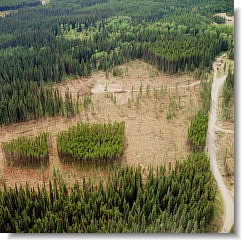Module 7 - Managing for biodiversity and other objectives
Overview of module 7
Managing for biodiversity and other objectives has four major heading and several subheadings:
- Forest health
- Stand level biodiversity—range considerations
- Maintaining biodiversity—range considerations
- Fire suppression and prescribed fire
- Silvicultural systems
- Planting
- Thinning
- Erosion and brush control
- Soil disturbance and road building
- Biodiversity objectives for permanent range
Learner outcomes
On completion of this module, you will be familiar with managing for biodiversity and other objectives
- Discuss managing for biodiversity and other objectives
Pre-reading questions
The following questions will determine how much you already know about managing for biodiversity and other objectives. It is suggested that you use a mind map and the headings listed above to assist you. A mind map is a powerful tool because it allows the right hemisphere and the left hemisphere of the brain to work together.
-
Why should we manage our forests for biodiversity?
-
How does forest health fit with managing biodiversity?
-
Provide several examples of how forest health impacts on planning for forest biodiversity?
-
-
What are the six forest stand activities that should be considered when planning for biodiversity?
-
How does each of the six forest stand activities impact on range biodiversity objectives?
-
In some situations, management for stand level biodiversity can conflict with other stand or range management objectives. This can be offset most effectively through careful planning, although some give and take will usually be required to integrate multiple management objectives.

An example of practicing for multiple objectives.


